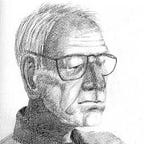Beer Purity
A 30-minute drive aided by 21st century satellite navigation brought us to the Aldersbach monastery dating back to a church in the year 880. It was the summer of 2016 and the museum at the monastery hosted a beer brewing exhibit in celebration of the 500th anniversary of Bavarian brewing standards ─ Reinheitsgebot (purity law) of 1516. Rules are rules in Germany and beer making is no exception. The 1516 Bavarian beer purity law guarded the quality of beer and became the world’s oldest consumer protection food law. It was made mandatory nationwide under Kaiser Wilhelm II in 1905: Thou shalt use no other piece than barley, hops, and water for making beer.
Yeast, unknown in 1516, was added to the formula later to help in fermentation and flavor. Originally there was plenty of natural yeast in the air but when yeast was discovered, it became part of the purity law. Germans are rightly proud of the purity law and have petitioned the UN to have the law protected as a world cultural heritage.
Brewing at the monastery has taken place since 1268. The emphasis on historical dating helps enshrine the importance of beer in the life-blood of Bavaria. The drive to the monastery grounds through rolling hills and farms on a rare cloudless day only reinforced the good life in Bavaria.
Visitors to this summer’s beer museum exhibition are greeted with these words: “Bavaria’s heart beats along with its unique beer culture, making the precious liquid its fifth element. Drinking Bavarian beer is a cultural event that is strongly tied with its past . . . Given the success of Bavarian beer worldwide, we like to celebrate . . . our unique beer culture.”
Along with the finer points of beer brewing, the exhibition had two pictures that captured my attention. The first was of a waiter carrying a record number of liter mugs. It made me think of adding beer mugs to the Olympic weight-lifting competition! I am also amazed at the strength of Oktoberfest waitresses in their dirndl dresses carrying five liter mugs in each hand. This photo tops my amazement.
The second photograph was equally surprising showing a Star of David on the wall of a German brewery. The accompanying caption said that it was not a religious symbol but rather a medallion of government authorization to operate a brewery.
Beer brewing became a national German beverage after the wars of the 16th and 17th centuries as well as a long cold spell ending a wine culture in favor of beer. Half of all German breweries are in Bavaria.
It was hard to remember that this was a monastery with all the beer promotion, but then again monks in the Middle Ages provided passing pilgrims food and drink. They brought study, patience, and dedication to the brewing process with the best ingredients and sanitary conditions. The beer, sold commercially, paid monastery taxes, laborers, and supplies.
The most striking structure in the monastery, apart from my fascination with the beer museum, is the baroque Church of the Ascension of the Virgin Mary built in 1720 with interior design by the Asam brothers.
We retraced our pastoral route in time to enjoy a Happy Hour with beer and pretzels to the accompaniment of the nightly news on TV. It is comforting to know that in spite of all the bad news around the world, the purity law is still in full force after 500 years.
